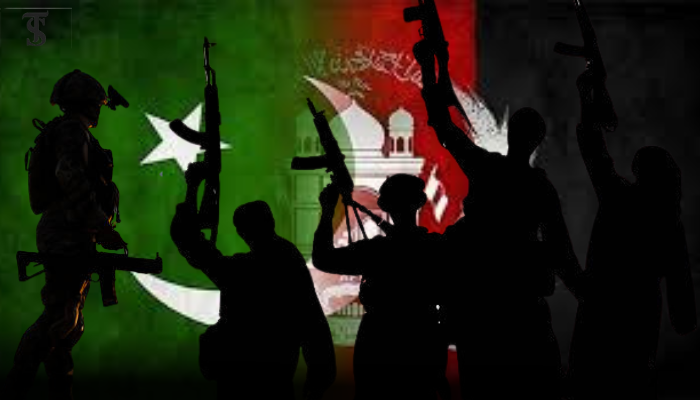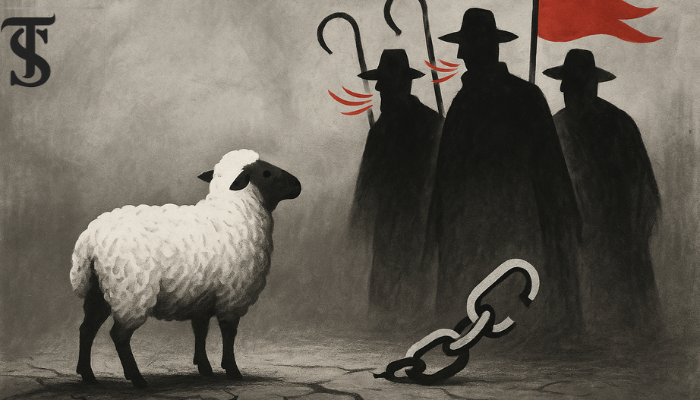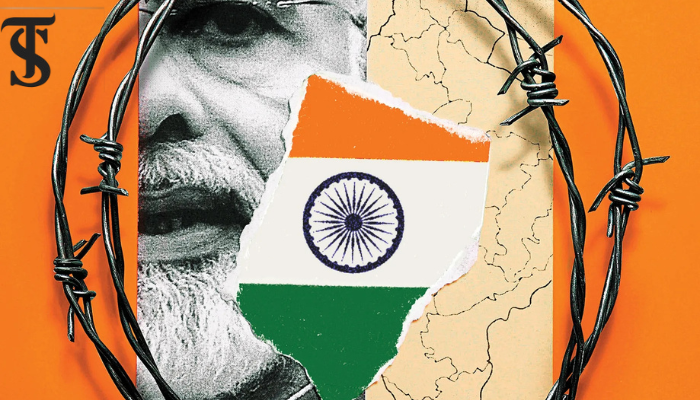From War to Peace: The Urgency of Resolving Pakistan-Afghanistan Tensions

- Escalating Tensions: The conflict between Pakistan and Afghanistan worsened after Pakistan's December 2024 airstrikes, which led to retaliatory strikes by the Afghan Taliban.
- Historical Context and Militancy: The longstanding tensions, rooted in historical alliances and the rise of the Tehrik-i-Taliban Pakistan (TTP), have contributed to regional instability.
- Call for Peaceful Dialogue: War is not the solution; both nations must prioritize diplomatic negotiations, with international mediation, particularly from China and the OIC, to ensure long-term stability.
War is often viewed as the last resort when all other avenues for resolution have been exhausted. It is widely accepted that war exacerbates existing issues, leading to greater destruction, loss of life, and long-term instability. On the other hand, negotiation fosters peace, dismantles hatred, and creates an environment conducive to prosperity. Therefore, when evaluating the situation between Pakistan and Afghanistan, war is not the solution. The conflict between these two countries has been longstanding, but the recent escalation in tensions following the airstrikes in Afghanistan makes it crucial to explore peaceful solutions.
The situation worsened on December 25, 2024, when Pakistan conducted airstrikes on the Paktika region, claiming that the Tehrik-i-Taliban Pakistan (TTP) had established safe havens there. However, the Afghan Taliban government disputed this claim, asserting that the strikes targeted innocent immigrants from Waziristan, resulting in the deaths of 45 people, mostly women and children. In retaliation, the Afghan Taliban launched strikes on various regions within Pakistan, causing the deaths of 19 Pakistani troops. In response, Pakistan’s Defense Minister, Khawaja Asif, hinted at taking a firm stance against Afghanistan, further escalating tensions.
Despite the growing rhetoric in Pakistani media about an invasion of the Wakhan Corridor — a narrow strip of land situated at the crossroads of Pakistan, China, Afghanistan, and Tajikistan — experts argue that such claims are propaganda rather than reality. Engaging in conflict in the Wakhan Corridor could damage Pakistan’s relationship with China and intensify terrorism in the region. Thus, it is essential to focus on finding peaceful resolutions rather than succumbing to the urge for military retaliation.
To understand the roots of the ongoing tensions, we must examine the historical context of Pakistan-Afghanistan relations, particularly during the Soviet-Afghan war and the War on Terror. During the Soviet-Afghan war (1979-1989), Pakistan was a key ally of the Afghan Mujahideen, supported by the United States. This alliance gave birth to a close relationship between Pakistan and the Taliban. Pakistan played a significant role in training Mujahideen fighters, including Taliban leaders like Mullah Omar. The Soviet Union’s withdrawal from Afghanistan in 1989 was a victory for the Afghan Mujahideen, but it also set the stage for Afghanistan’s descent into civil war, which, in turn, contributed to the rise of terrorism in Pakistan.
Following the September 11 attacks in 2001, the United States invaded Afghanistan to dismantle the Taliban regime, and Pakistan once again became involved in the conflict, this time as an ally of the U.S. Pakistan launched military operations against Al-Qaeda in the Federally Administered Tribal Areas (FATA) in 2004, under pressure from the U.S. This marked a shift in Pakistan’s relationship with the Taliban, as the country’s support for the Taliban waned, giving rise to the Tehrik-i-Taliban Pakistan (TTP) in 2007.
The TTP, initially led by Baitullah Mehsud, emerged as a response to Pakistan’s actions against the Taliban, and it quickly became a formidable militant group targeting Pakistan’s military and civilians. The TTP’s attacks included the tragic attack on the Army Public School in Peshawar in 2014, which killed 150 people, most of whom were children. The TTP’s violent campaigns, including attacks on Chinese nationals and threats against the China-Pakistan Economic Corridor (CPEC) projects, have had a significant impact on Pakistan’s security situation.
To combat terrorism, Pakistan has launched several military operations, costing thousands of lives and billions of dollars. According to the Pakistan Economic Survey (PES), Pakistan has spent approximately $26 billion as a result of its involvement in the War on Terror. Despite these efforts, Pakistan remains one of the countries most affected by terrorism, ranking seventh in the Global Terrorism Index (GTI) for 2024.
The situation in the region remains tense, particularly after the December 2024 airstrikes. On January 5, 2025, the TTP issued a statement declaring that it would target Pakistani military-owned businesses, further exacerbating Pakistan’s already precarious economic situation. With Pakistan’s economy heavily reliant on loans from the International Monetary Fund (IMF), any further destabilization could push the country into financial collapse.
Moreover, the TTP’s alliances extend beyond Pakistan’s borders. The group has external support, including from elements within Afghanistan, further complicating the situation. Pakistan’s internal challenges, such as political instability, poverty, unemployment, human rights violations, and rising extremism, make it even more difficult for the country to engage in a full-scale war against the Afghan Taliban and the TTP. Engaging in conflict under such circumstances would likely lead to further deterioration of Pakistan’s already fragile state.
Afghanistan is also grappling with its own set of challenges. The country is plagued by poverty, civil disputes, and a lack of trust in the Taliban government, which remains unrecognized by the United Nations. While some countries, including China, have established diplomatic ties with the Afghan Taliban, the government has yet to fulfill international expectations related to women’s rights, gender equality, and the provision of basic human rights for its citizens.
The path forward for both countries should not involve war but rather dialogue. Both Pakistan and Afghanistan must recognize that further conflict will only lead to mutual destruction. The international community, particularly China and the Organization of Islamic Cooperation (OIC), should play a mediating role in facilitating dialogue between the two countries. China, with its strategic interests in both nations through projects like the Belt and Road Initiative (BRI) and CPEC, is in a unique position to help foster peace. Both Pakistan and Afghanistan share economic ties with China, and peaceful negotiations could benefit all parties involved.
In conclusion, the prospects of war between Pakistan and Afghanistan are dire. War will not only destabilize the region further but will also delay much-needed progress on critical economic and social fronts. Both nations have a history of conflict, but they must now focus on resolving their differences through diplomatic means. As Gabriel Garcia Marquez once said, “It is easier to start a war than to end it.” It is essential that both Pakistan and Afghanistan choose negotiation over violence, as this will lead them down a path of prosperity, peace, and progress.
Noor Alam
The author is a student of Law at the University of Okara.






great article by author nooralam